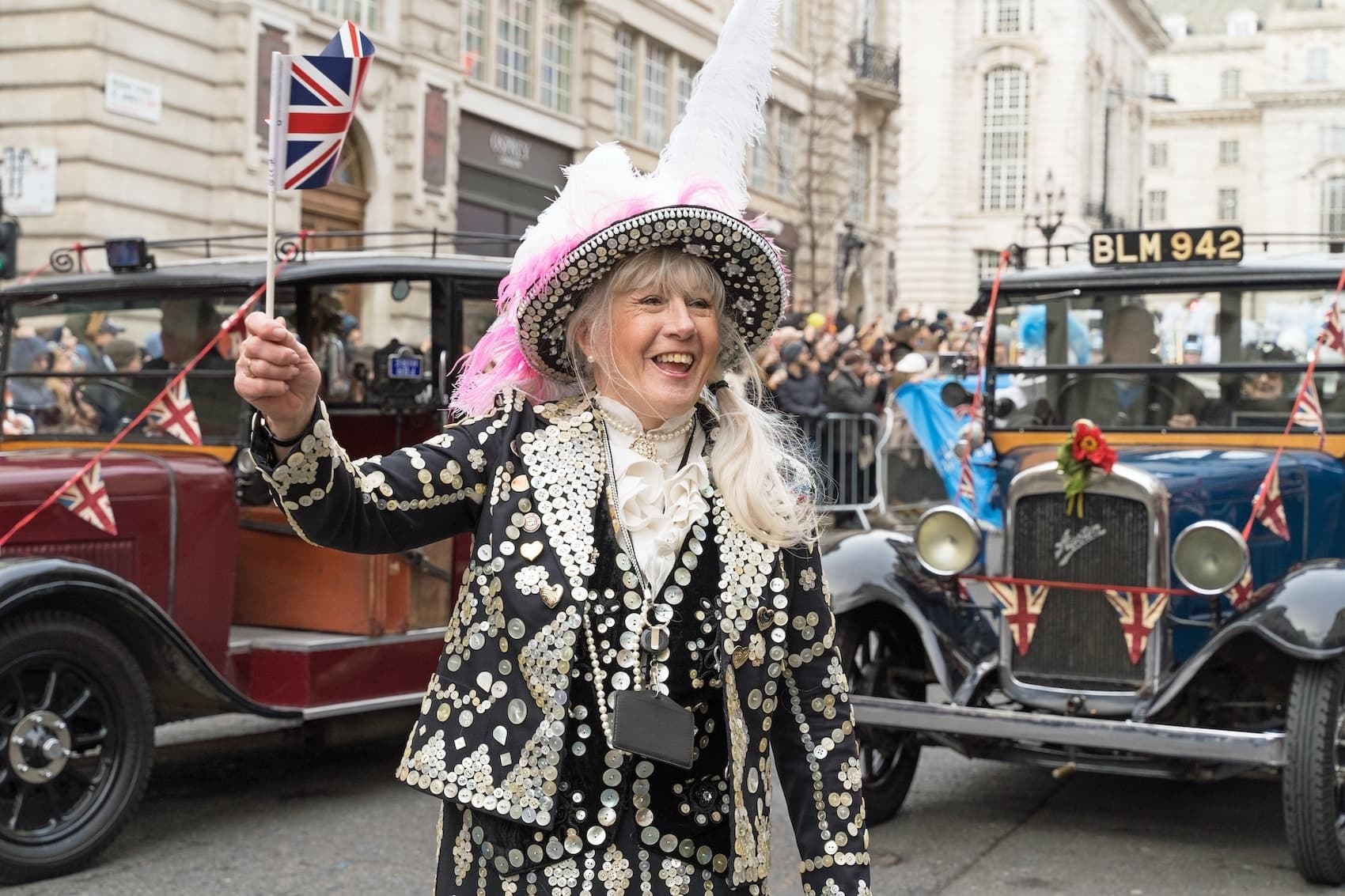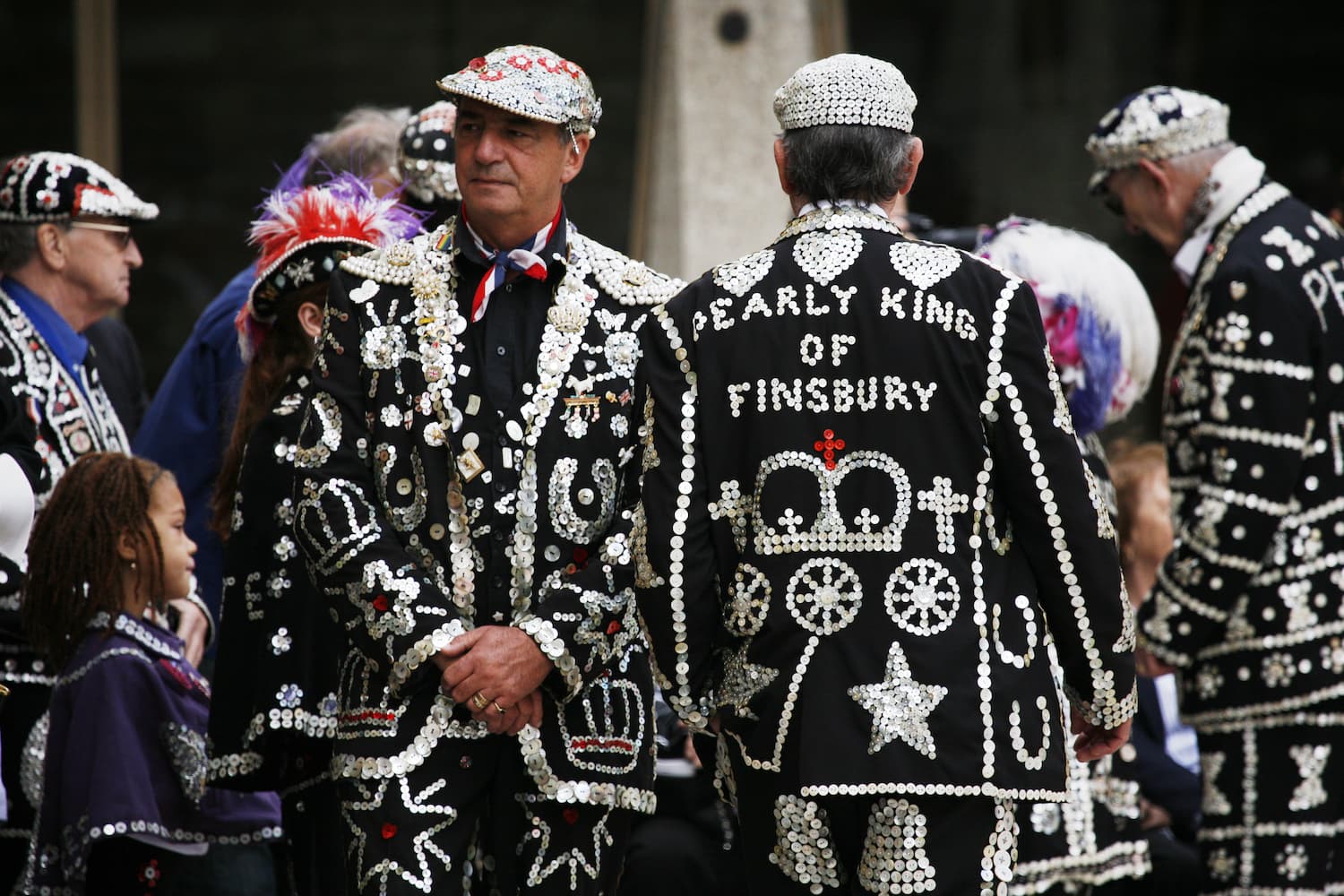Pearly kings and queens – fantastic fundraising
Mark Astarita tells the charming story of the pearly kings and queens. With their colourful feathered hats and hand-sewn pearl button suits, the ‘pearlies’ are an instantly recognisable London institution dating back 150 years.
- Written by
- Mark Astarita
- Added
- April 02, 2012
The tradition was started in 1875 by a young orphan called Henry Croft. When Henry was 13 years old he had to leave the orphanage to earn his living. He started working as a street sweeper in one of London’s markets and because he was a hard worker he quickly made many friends, particularly among the costermongers, a tough breed of market traders.
Henry learned a lot about the lives of the costermongers: their generosity and the way they looked out for each other if anyone was sick or in need. The young lad was so fascinated by this way of life that he decided he would like to help others less fortunate than him, including the children at the orphanage where he had spent his childhood.
The costermongers sewed pearl buttons down the seams of their trousers to distinguish themselves in the busy markets of London, which gave Henry an idea. He knew that if he wanted to collect a lot of money he had to stand out, so as he swept he gathered the pearl buttons that had fallen from the clothes of visitors to the market. When he had enough he sewed them on his cap and then continued until his entire suit was covered.
Many of the orphanages, hospitals and workhouses in those days needed help, so there was so much demand for his charitable work that Henry had to turn to his friends the costermongers, who didn’t let him down. Many of the costermongers became the first pearly families. There were 28 families, one for each of the London boroughs, one for the City of Westminster and one for the City of London.
It is estimated that when Henry Croft died in 1930 he had raised over £5,000. The equivalent value today would be approximately £200,000.
The pearlies have been working ever since, handing down their inherited titles and duties from generation to generation. Henry Croft’s great granddaughter is pearly queen of Somers Town.
In May 2012, several pearly families gathered at a pub in East London for a pearly coronation, the largest in over a hundred years, when nine pearly kings and queens were crowned.
Vannessa Vallely, a high-powered networker in London, was crowned pearly queen of the City of London, taking over from her father. She is the epitome of the pearly ethic – a hard-worker and a tireless fundraiser.
‘Raising money has been the cornerstone of the pearlies since Henry Croft started wearing buttons. It is simply what we do’ she says. ‘It’s a fantastic tradition. We stand for the “good old days”. What people see is a real cockney “knees up”. Wherever we can we pitch up and raise money. Every event we attend is about raising money. The coronation raised money for Homes for Heroes. It is something I, and all pearlies, are proud of.’
A ‘cockney knees up’ is exactly what draws many people to the pearlies. During the crowning, tourists crammed into the pub, drinks in hand, to catch a glimpse of the proceedings. With lots of laughing and a bit of shouting, nine shiny, plastic crowns and polyester-ermine cloaks were placed on the heads and shoulders of the new pearly kings and queens.
The coronation itself was brief but the celebration lasted long into the evening. The music started and the pearlies began their rounds with plastic buckets, collecting spare change for charity. It may not seem like much but it adds up.
Last year Jackie Murphy, pearly queen of Hackney, heard that a special needs school needed a hydro pool.
‘We raise lots of money – last year we managed to raise £65,000 towards building the pool. Now it’s ready and the children are using it. When you see that you think you have done something with your life. We are proud to be pearlies. It is a tradition, one of the oldest London traditions and it is a family one as well. We are proud of it because it cheers everybody up and it’s a happy tradition.’
There are other ‘pearly’ associations alongside the official historic one to which that Vanessa Vallely belongs. ‘There’s lots of pearlies around from different associations, or not from the original families’ she explains. ‘But as long as they’re collecting for charity, what does it matter? We’re really embracing diversity. London is a melting pot of a hundred different cultures. Why would the pearlies not follow suit?’




















